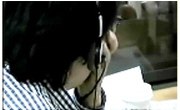조선시대 호마는 고려전기 여진의 달단마와 고려 말 원나라 몽고마가 그 연원이다. 그동안 조선시대 호마는 궁중의 내구마에 한정하였으나, 필자는 내구마로 간택되지 못해 각 고을에 보낸 ...
http://chineseinput.net/에서 pinyin(병음)방식으로 중국어를 변환할 수 있습니다.
변환된 중국어를 복사하여 사용하시면 됩니다.
- 中文 을 입력하시려면 zhongwen을 입력하시고 space를누르시면됩니다.
- 北京 을 입력하시려면 beijing을 입력하시고 space를 누르시면 됩니다.

조선전기 호마의 조련과 기마전 = Training of Manchurian Horses and Cavalry Battle in the Early Joseon Period - Focused Training of Naegu Horses(內廐馬)
한글로보기https://www.riss.kr/link?id=A105867207
- 저자
- 발행기관
- 학술지명
- 권호사항
-
발행연도
2018
-
작성언어
Korean
-
주제어
호마 ; 분양마 ; 전마 ; 내구마 ; 겸사복 ; 호마목장 ; 창덕궁 후원마 ; 어가 ; 깃발과 고각소리 ; 마상무예 ; Homa horses ; Bunyangma horses ; war horses ; Naeguma horses ; Gyeomsabok ; Homa horse ranches ; The royal coach ; the flags and horn sounds ; horseback martial arts
-
등재정보
KCI등재
-
자료형태
학술저널
-
수록면
223-252(30쪽)
- 제공처
-
0
상세조회 -
0
다운로드
부가정보
국문 초록 (Abstract)
조선시대 호마는 고려전기 여진의 달단마와 고려 말 원나라 몽고마가 그 연원이다. 그동안 조선시대 호마는 궁중의 내구마에 한정하였으나, 필자는 내구마로 간택되지 못해 각 고을에 보낸 분양마, 영진의 군사에게 지급한 전마, 동절기의 여러 목장에서 각 고을에 보낸 목장마를 호마로 규정하였다. 내구마 조련은 태종대 중반까지는 내승이, 태종대 후반은 겸사복이 주도하였다. 겸사복은 마상무예를 겸비한 사복이 상호군‧호군‧첨총제‧행사직 등과 같은 관직을 겸직하면서 시작되었다. 특히 세조대 겸사복은 지위가 급속히 상승했는데, 호마목장의 설치, 호마의 조련, 창덕궁 후원마 사육 등을 그 통로로 이용하였다. 성종대에는 내사복시의 위상이 강화됨으로써 내승이 겸사복을 감찰하는 지위를 회복하였다. 각 고을의 분양마 제도는 궁중의 내구마와 동절기의 목장마가 그 시초이다. 당시 각 고을에서는 수용할 수 있는 분양마를 남기고 여분의 분양마를 북방과 영진의 무재가 있으나 말이 없는 군사에게 지급하였다. 한편 내구마와 분양마로 지칭되는 준마는 어가의 행차나 실전과 같은 기마전을 통해 조련의 강도를 심화시켰다. 국왕이 타는 어가는 大駕와 法駕 및 少駕가 있는데, 각 어가는 좌우에 세우는 어마의 숫자에 차이가 있으며, 국왕의 행차에는 수많은 방패와 깃발 및 고각이 동원되었다. 따라서 평소 어마를 길들일 때 깃발과 고각소리에 눈과 귀가 익숙하도록 조련하였다. 내구마와 군사들의 전마는 훈련형식의 마상무예를 통해 조련의 성과를 이루었다. 임란왜란 이후 동아삼국은 전쟁에서 대포와 총을 사용하였다. 특히 조선의 군사가 포를 쏘면 화염 때문에 앞을 분간할 수가 없었고, 폭발음이 커서 여진의 기병이 혼비백산하였다. 따라서 양란 이후 군사들의 전마 조련은 말이 대포와 총소리에 익숙하도록 훈련하였다.
다국어 초록 (Multilingual Abstract)
The origin of Homa horses in Joseon era is from Yeojin`s Daldanma horses at early Goryeo era and Mongo horses of Yuan Dynasty at late Goryeo era. In the meantime, Homa horses in Joseon era were limited to Naeguma horses in court, but this study define...
The origin of Homa horses in Joseon era is from Yeojin`s Daldanma horses at early Goryeo era and Mongo horses of Yuan Dynasty at late Goryeo era. In the meantime, Homa horses in Joseon era were limited to Naeguma horses in court, but this study defined Bunyangma horses not selected as Naeguma horses but sent to each village, war horses sent to Yeongjin military, and ranch horses sent to each village from various ranches in the winter season were as Homa horses. Naeseumi horses were trained by Naeseungi until the middle of king Taejong, and were trained by Gyeomsabok in late King Taejong era. Gyeomsabok started as Sabok, who had horse martial arts, took an office such as Sanghogun-Hogun-Cheomchongje-Haengsajik. In King Sejong era, in particular, the status of Gyeomsabok rapidly increased, and it used installation of Homa horse ranches, training of Homa horses, breeding of Changdeokgung Huwonma horses as a pathway. In King Seongjong era, Naesaboksi`s status was reinforced and the status to supervise Naeseungi Gyeomsabok was restored. The beginning of Bunyangma horse system of each village is Naeguma horses of court and ranch horses of winter season. At the time, Bunyangma horses were left in each village that could afford to receive, and extra Bunyangma horses were sent to the soldiers in the Yanggye region and Yeongjin with Mujae but without the horses. The strength of training of Homa horses, also called Naeguma horses and Bunyangma horses, was intensified through the use of king"s royal coach coming or horse battles such as real combats. The royal coach of the king consisted of Daega(大駕), Beopga(法駕) and Soga(少駕), and each royal coach had a different number of royal horses on its left and right, and there were numerous shields, flags, and horns mobilized. So, usually when royal horses were tamed, their eyes and ears were trained to familiarize with the flags and horn sounds. The Naeguma horses and the war horses of the soldiers were trained through a training type of horse combat. After Imranwaeran, east Asian three countries used cannons and guns in the war. Especially when Joseon`s military shot cannons, they could not distinguish the front due to the flames, and the explosion sounded so hard that Yeojin`s cavalry got frightened out of their senses. Therefore, after Yangran, the military trained war horses to get accustomed to being familiar with cannons and gunshots.
목차 (Table of Contents)
- 국문초록
- Ⅰ. 머리말
- Ⅱ. 겸사복의 내구마 조련
- Ⅲ. 분양마 제도와 분양마의 조련
- Ⅳ. 전마의 조련과 마상무예 훈련
- 국문초록
- Ⅰ. 머리말
- Ⅱ. 겸사복의 내구마 조련
- Ⅲ. 분양마 제도와 분양마의 조련
- Ⅳ. 전마의 조련과 마상무예 훈련
- Ⅴ. 맺음말
- 참고문헌
- Abstract
동일학술지(권/호) 다른 논문
-
- 역사실학회
- 김일환(Kim, Il Hwan)
- 2018
- KCI등재
-
임진왜란기 남부지역 조선군 지휘부의 갈등 양상과 대응방안(1593. 7~1597.7)
- 역사실학회
- 김한신(Kim, Han-shin)
- 2018
- KCI등재
-
李睟光의 『芝峯類說』에 나타난 임진왜란 인식과 방어대책
- 역사실학회
- 김경태(Kim, Kyong Tae)
- 2018
- KCI등재
-
- 역사실학회
- 송기중(Song, Ki Jung)
- 2018
- KCI등재




 KCI
KCI DBpia
DBpia


